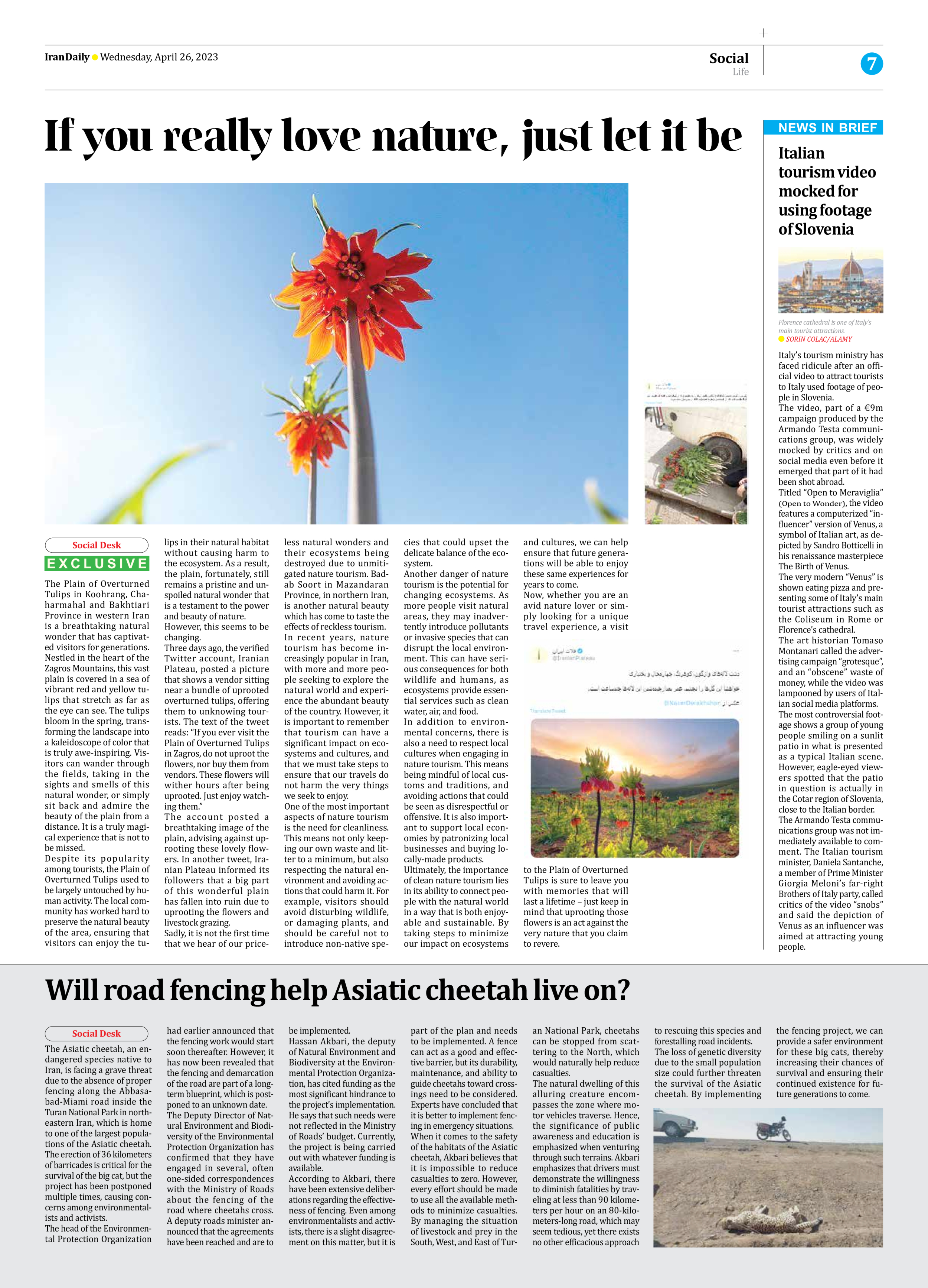
Will road fencing help Asiatic cheetah live on?
The Asiatic cheetah, an endangered species native to Iran, is facing a grave threat due to the absence of proper fencing along the Abbasabad-Miami road inside the Turan National Park in northeastern Iran, which is home to one of the largest populations of the Asiatic cheetah. The erection of 36 kilometers of barricades is critical for the survival of the big cat, but the project has been postponed multiple times, causing concerns among environmentalists and activists.
The head of the Environmental Protection Organization had earlier announced that the fencing work would start soon thereafter. However, it has now been revealed that the fencing and demarcation of the road are part of a long-term blueprint, which is postponed to an unknown date.
The Deputy Director of Natural Environment and Biodiversity of the Environmental Protection Organization has confirmed that they have engaged in several, often one-sided correspondences with the Ministry of Roads about the fencing of the road where cheetahs cross. A deputy roads minister announced that the agreements have been reached and are to be implemented.
Hassan Akbari, the deputy of Natural Environment and Biodiversity at the Environmental Protection Organization, has cited funding as the most significant hindrance to the project’s implementation. He says that such needs were not reflected in the Ministry of Roads’ budget. Currently, the project is being carried out with whatever funding is available.
According to Akbari, there have been extensive deliberations regarding the effectiveness of fencing. Even among environmentalists and activists, there is a slight disagreement on this matter, but it is part of the plan and needs to be implemented. A fence can act as a good and effective barrier, but its durability, maintenance, and ability to guide cheetahs toward crossings need to be considered. Experts have concluded that it is better to implement fencing in emergency situations.
When it comes to the safety of the habitats of the Asiatic cheetah, Akbari believes that it is impossible to reduce casualties to zero. However, every effort should be made to use all the available methods to minimize casualties. By managing the situation of livestock and prey in the South, West, and East of Turan National Park, cheetahs can be stopped from scattering to the North, which would naturally help reduce casualties.
The natural dwelling of this alluring creature encompasses the zone where motor vehicles traverse. Hence, the significance of public awareness and education is emphasized when venturing through such terrains. Akbari emphasizes that drivers must demonstrate the willingness to diminish fatalities by traveling at less than 90 kilometers per hour on an 80-kilometers-long road, which may seem tedious, yet there exists no other efficacious approach to rescuing this species and forestalling road incidents.
The loss of genetic diversity due to the small population size could further threaten the survival of the Asiatic cheetah. By implementing the fencing project, we can provide a safer environment for these big cats, thereby increasing their chances of survival and ensuring their continued existence for future generations to come.







